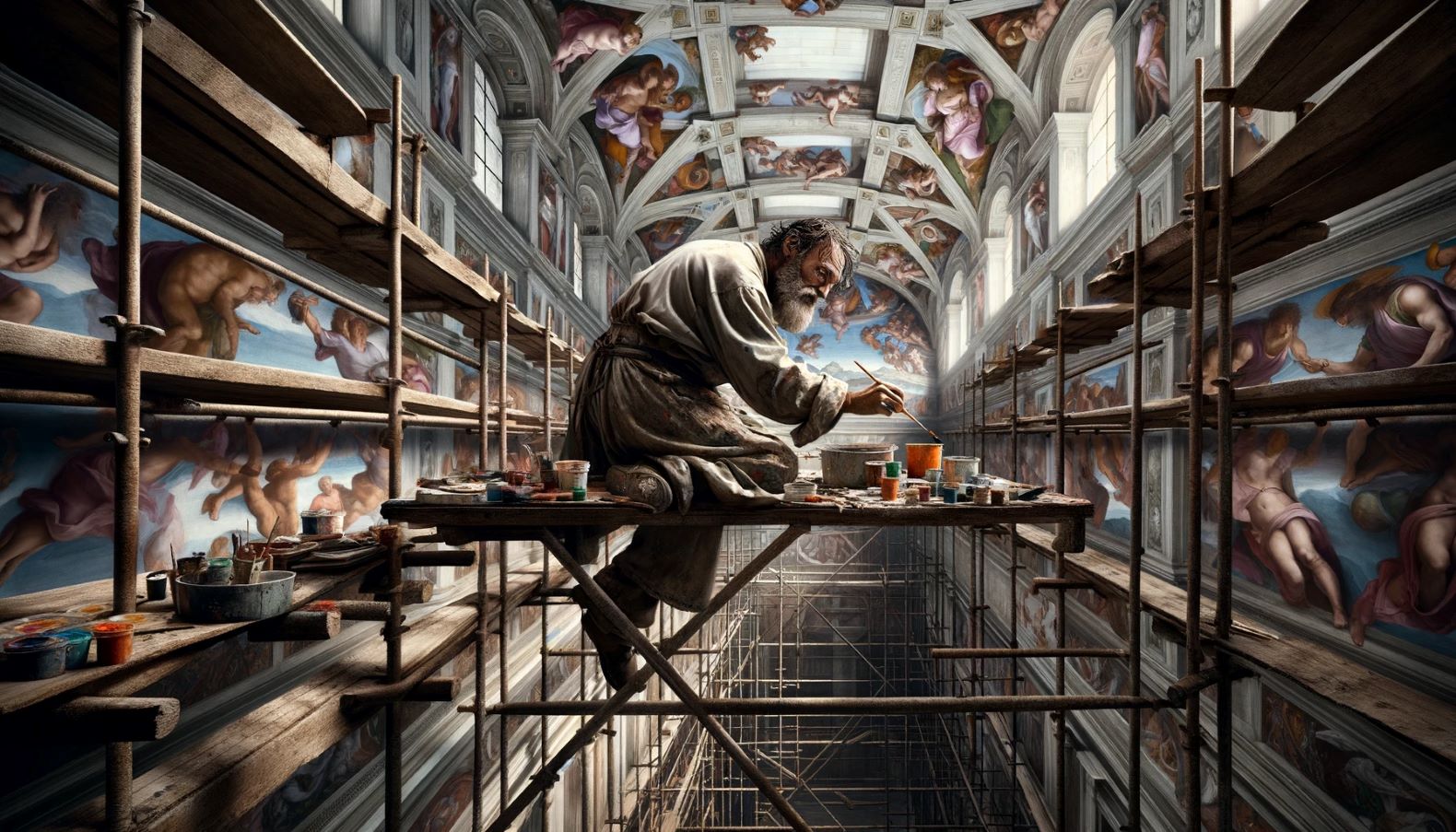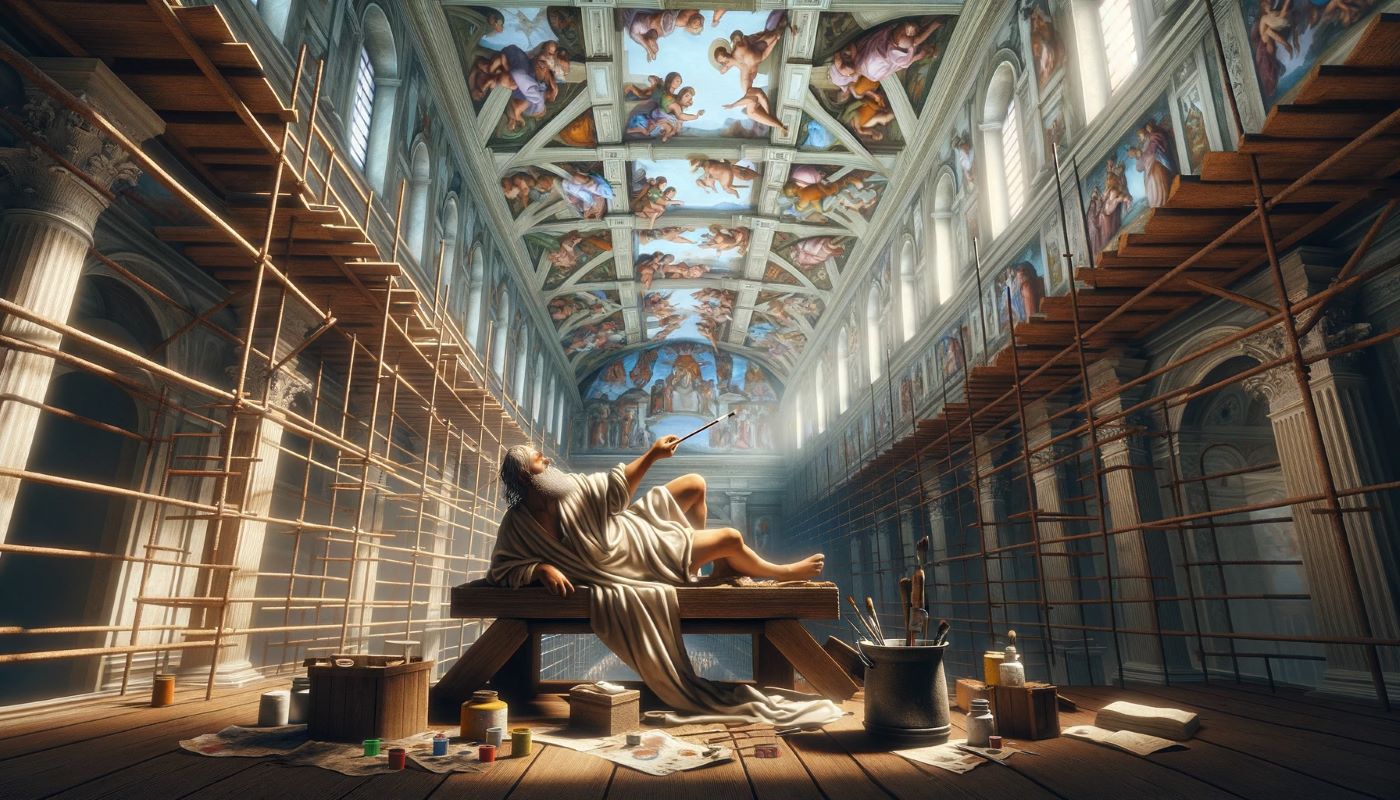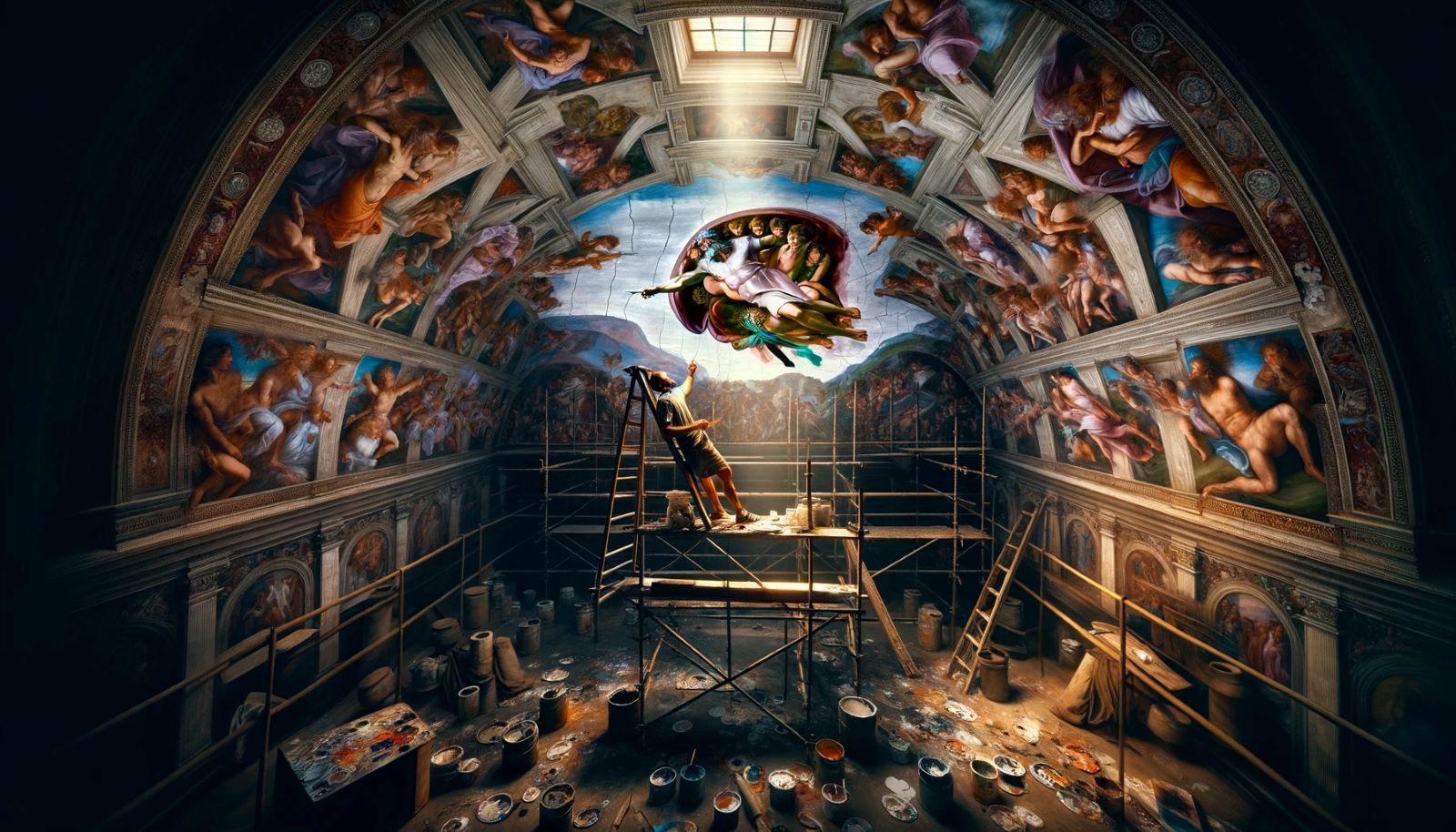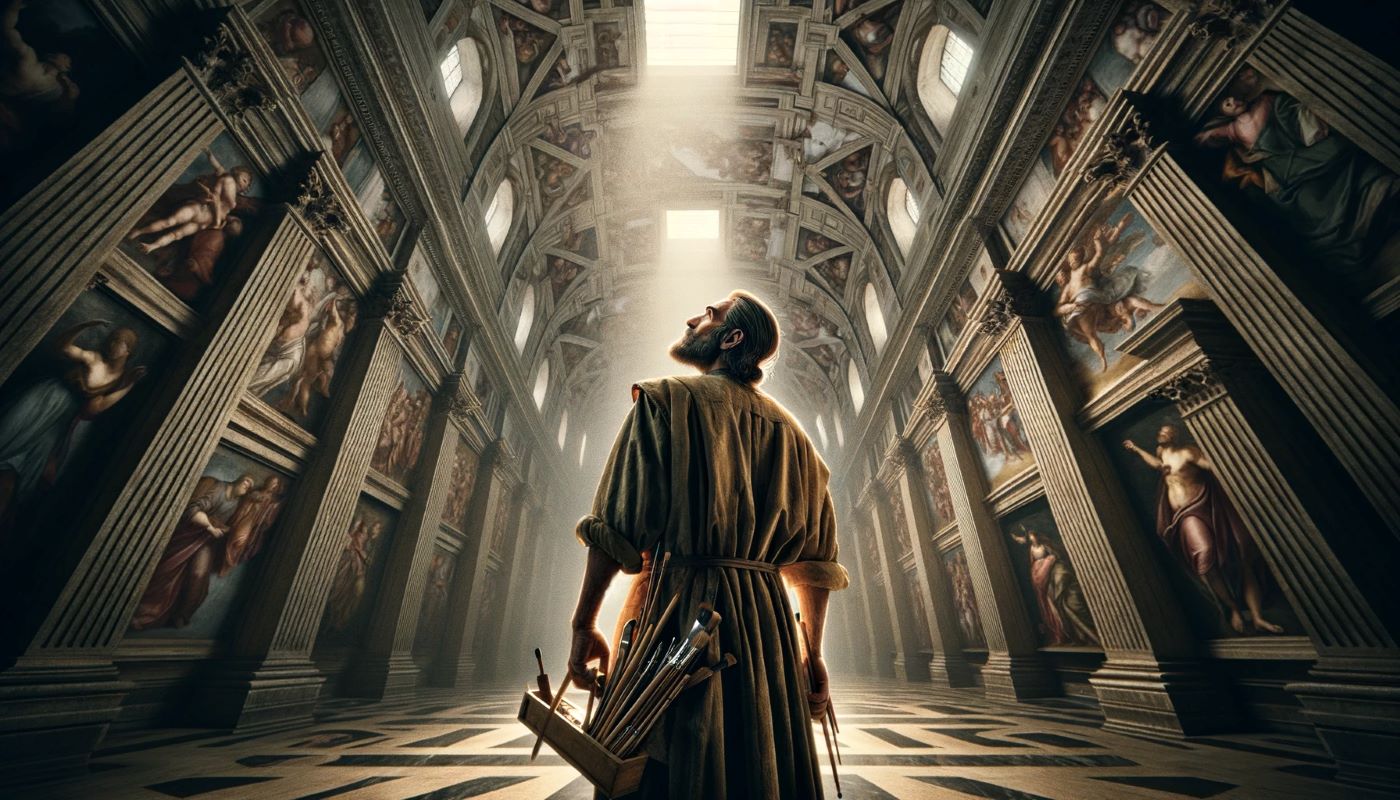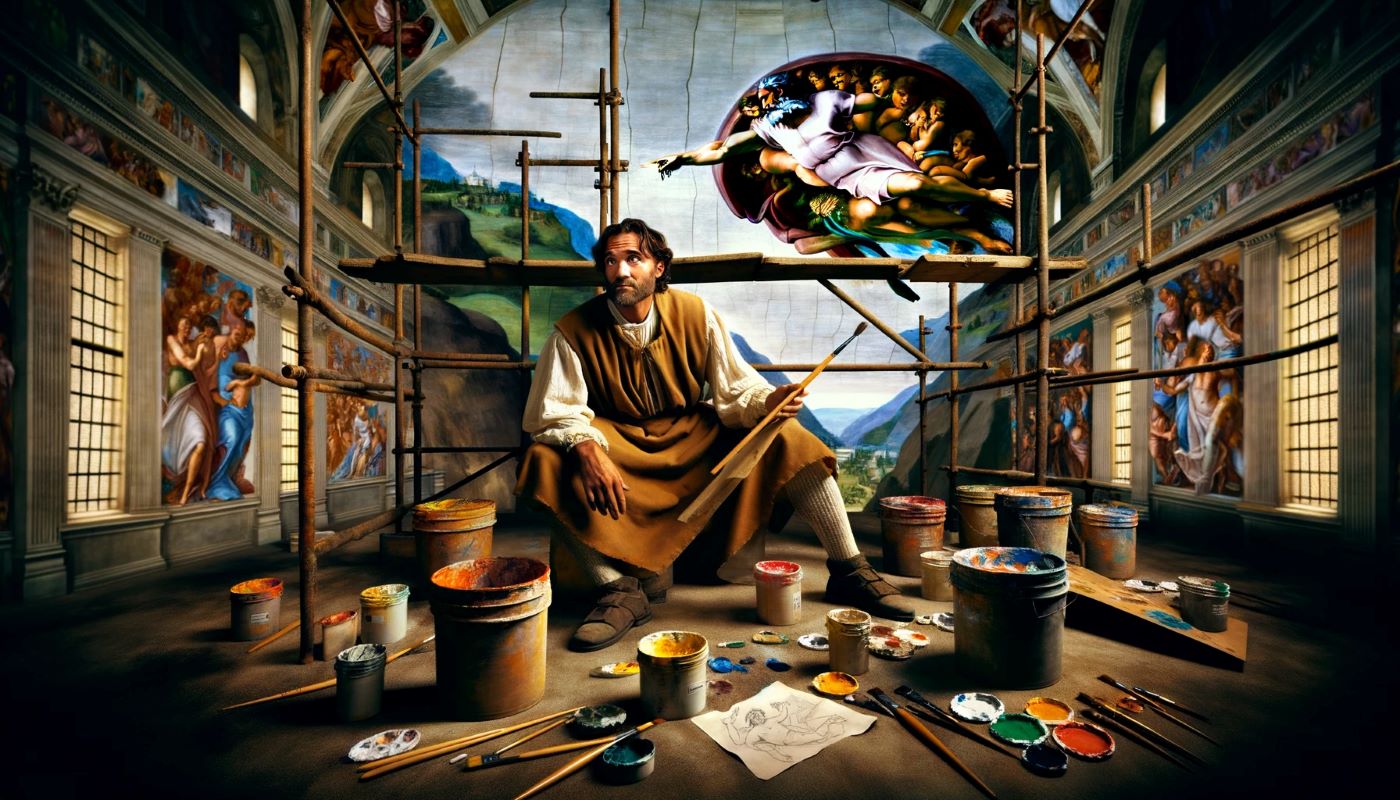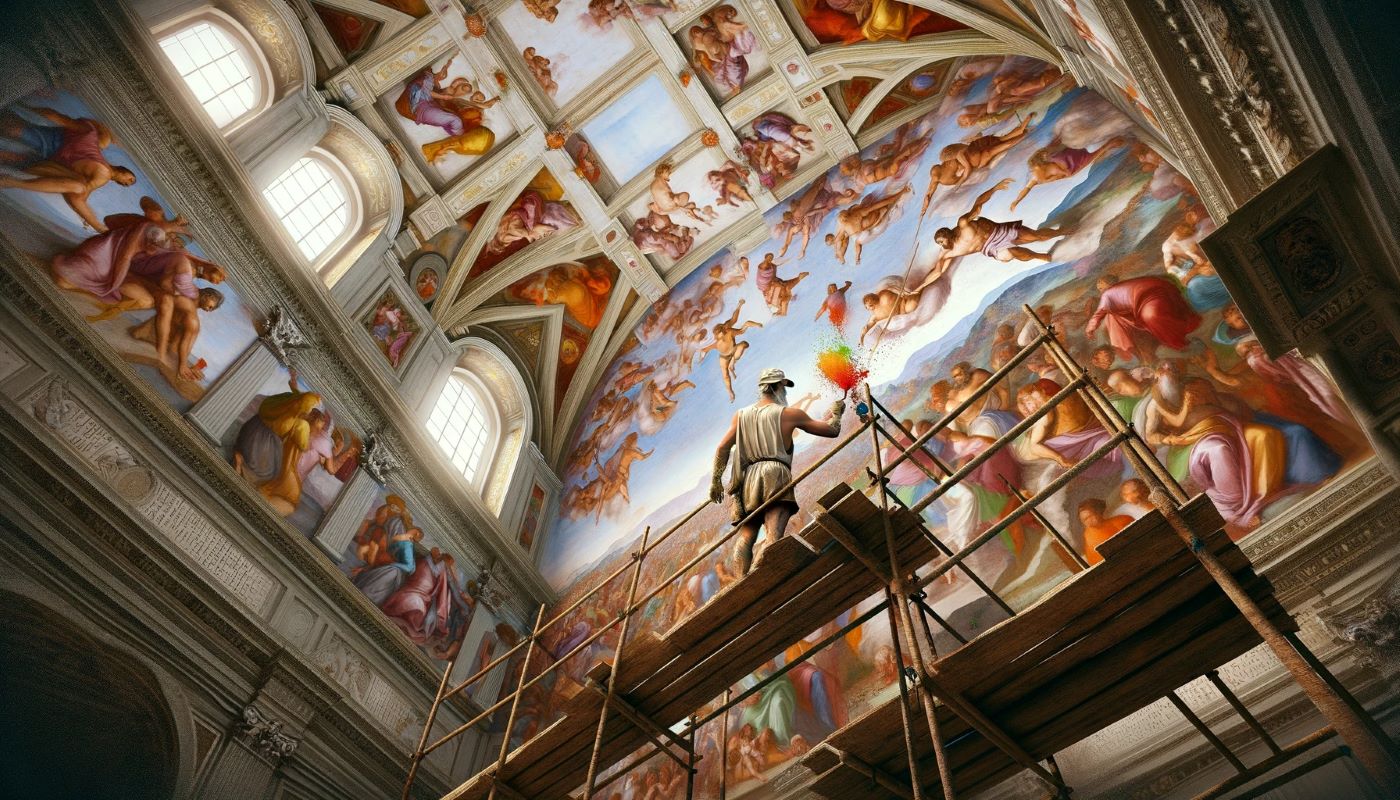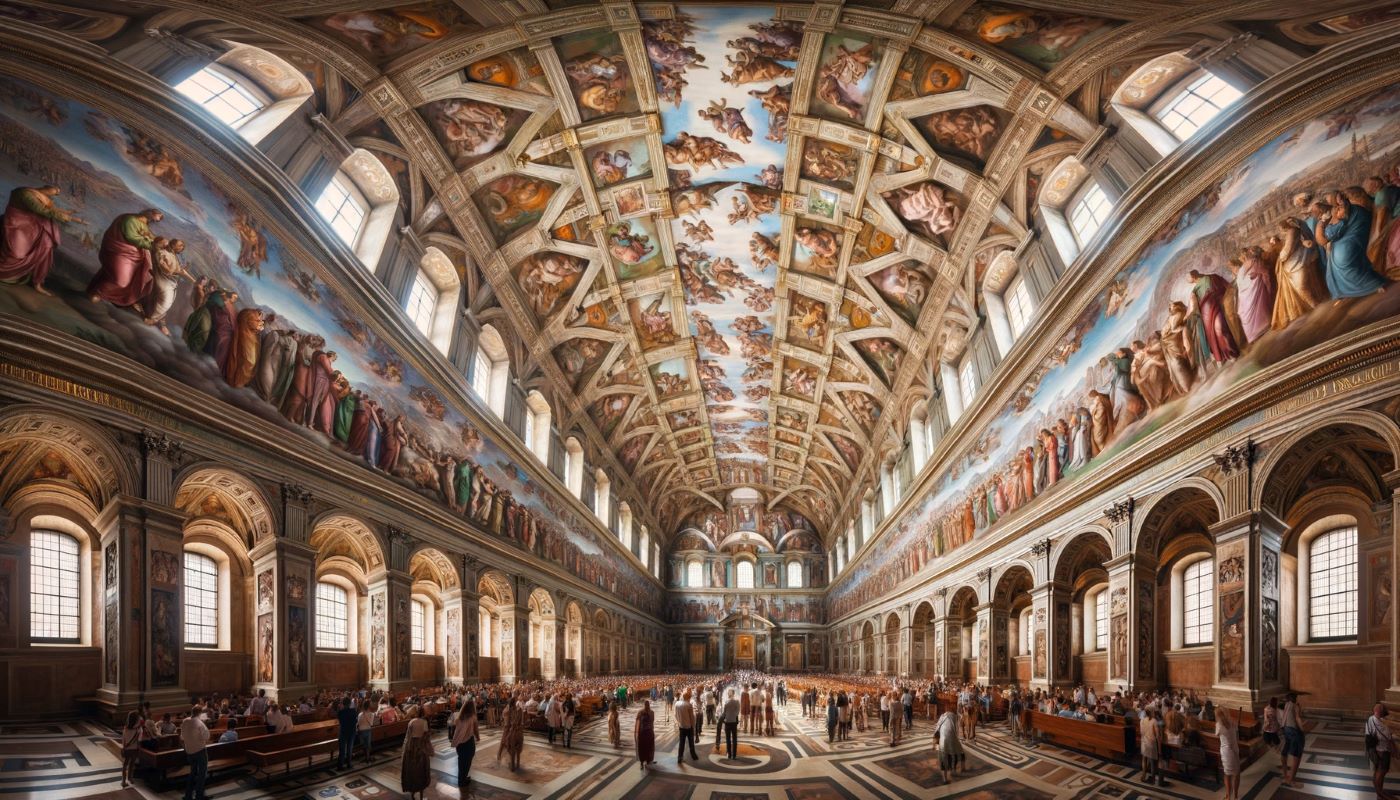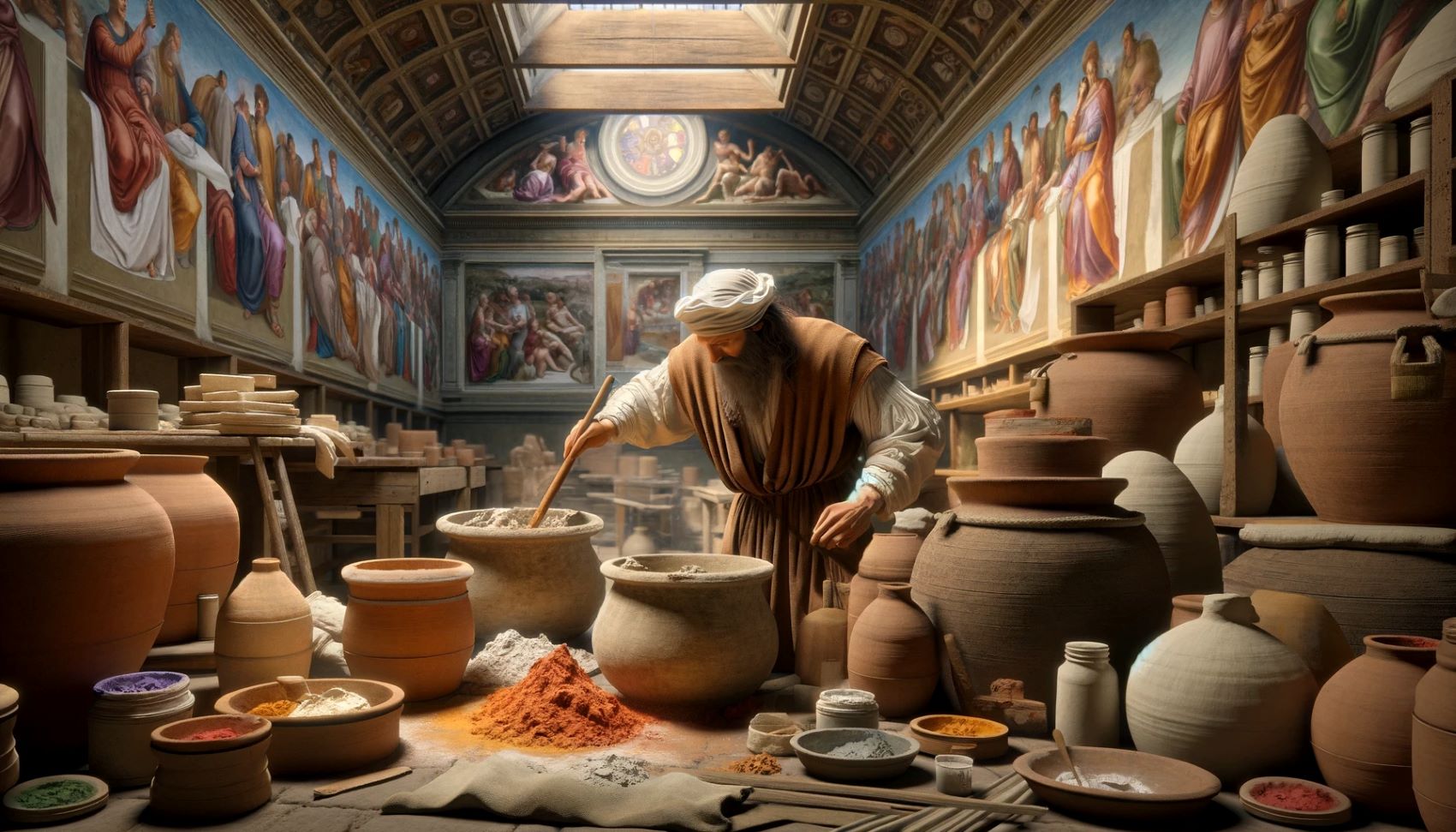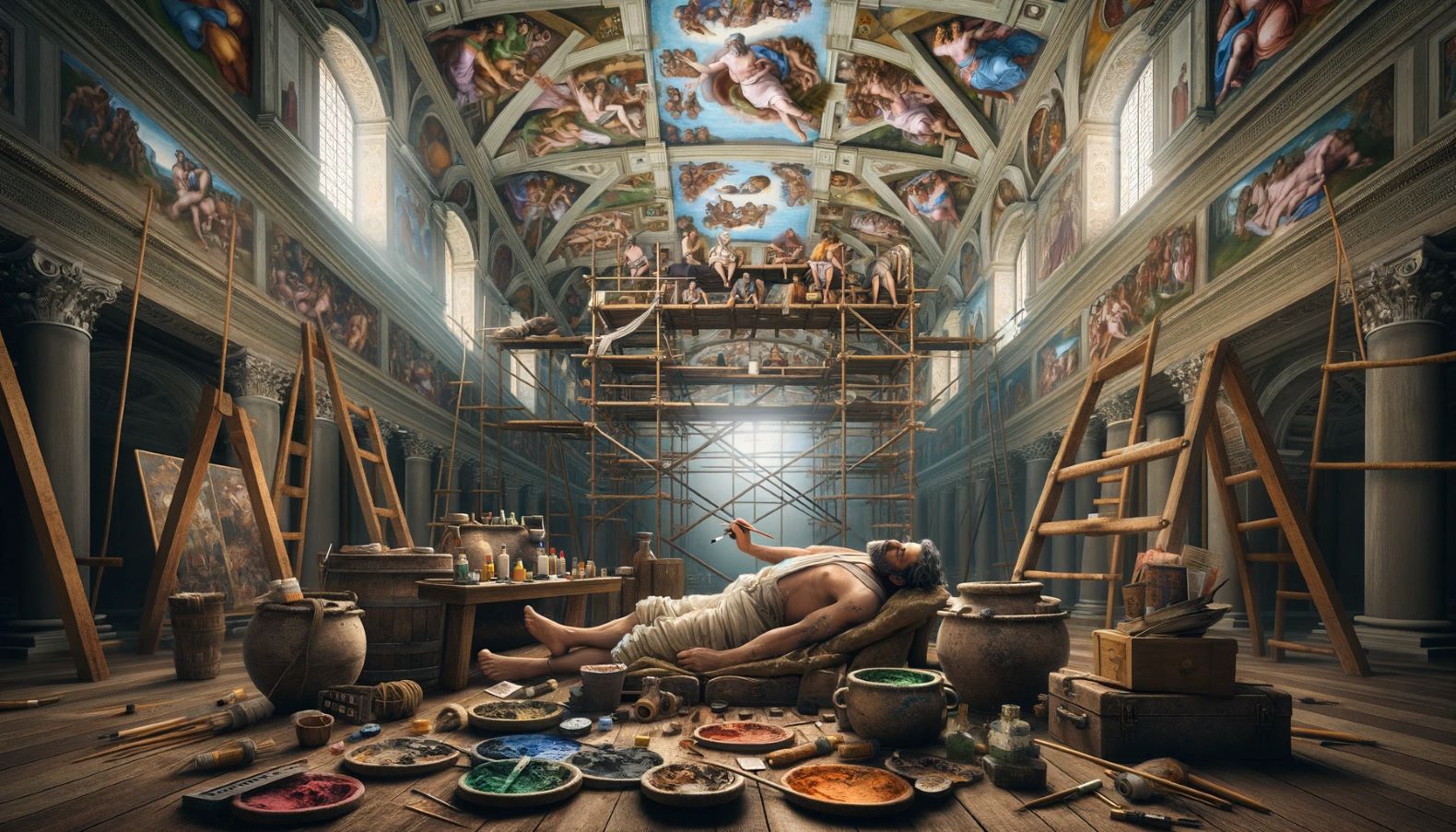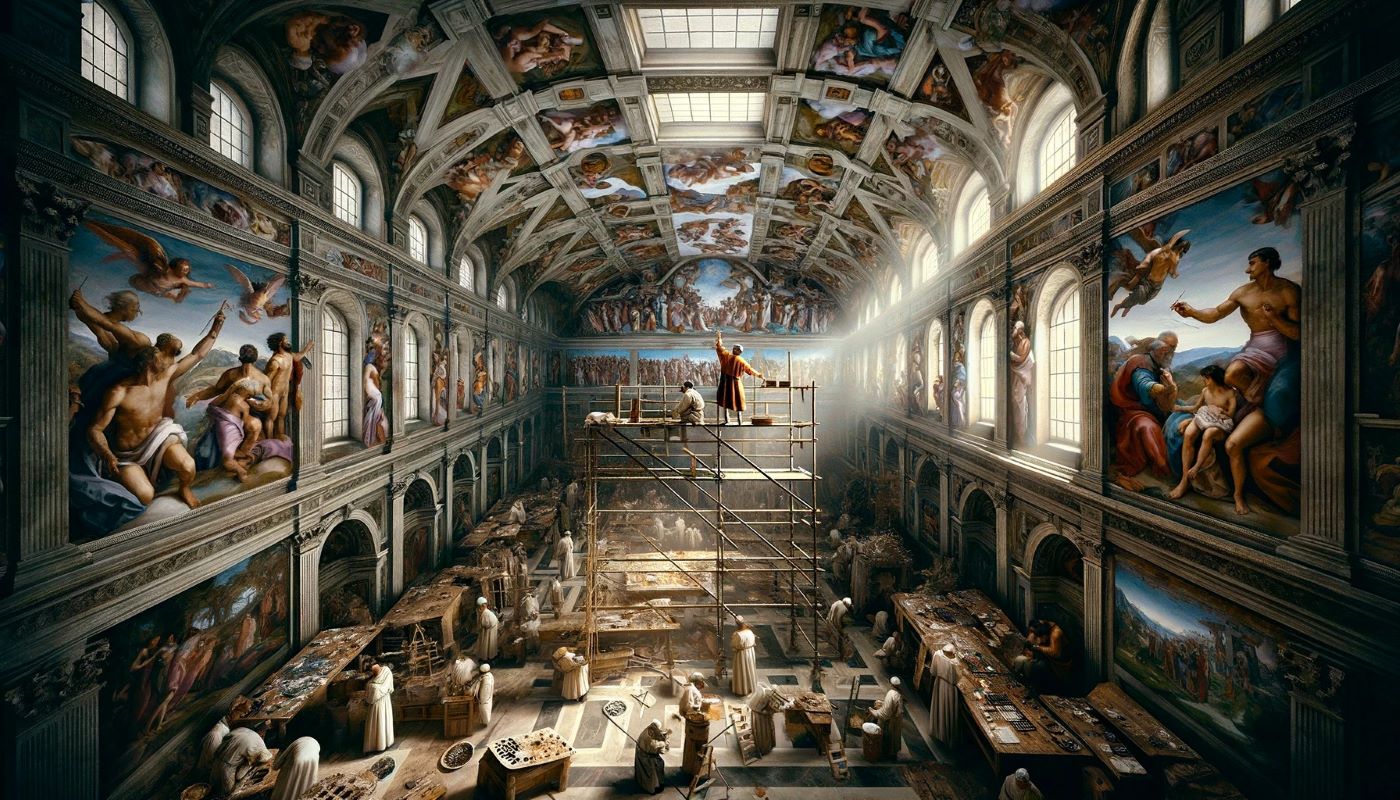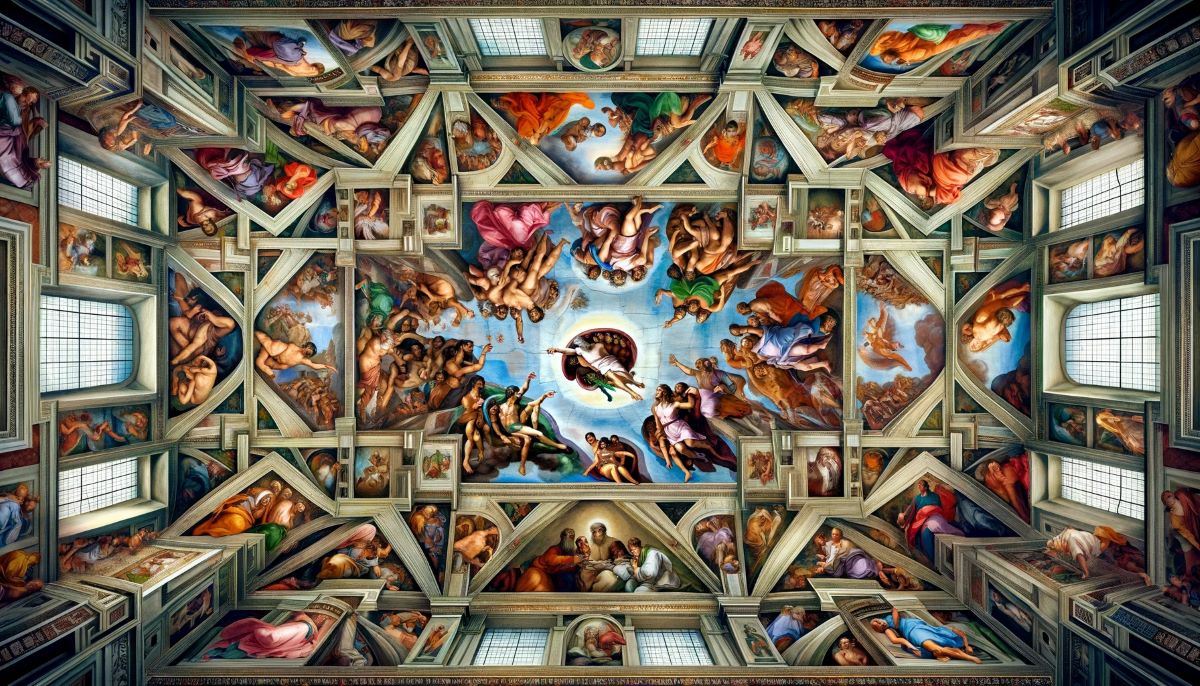Home>Arts and Culture>Who Commissioned Michelangelo To Paint The Ceiling Of The Sistine Chapel?
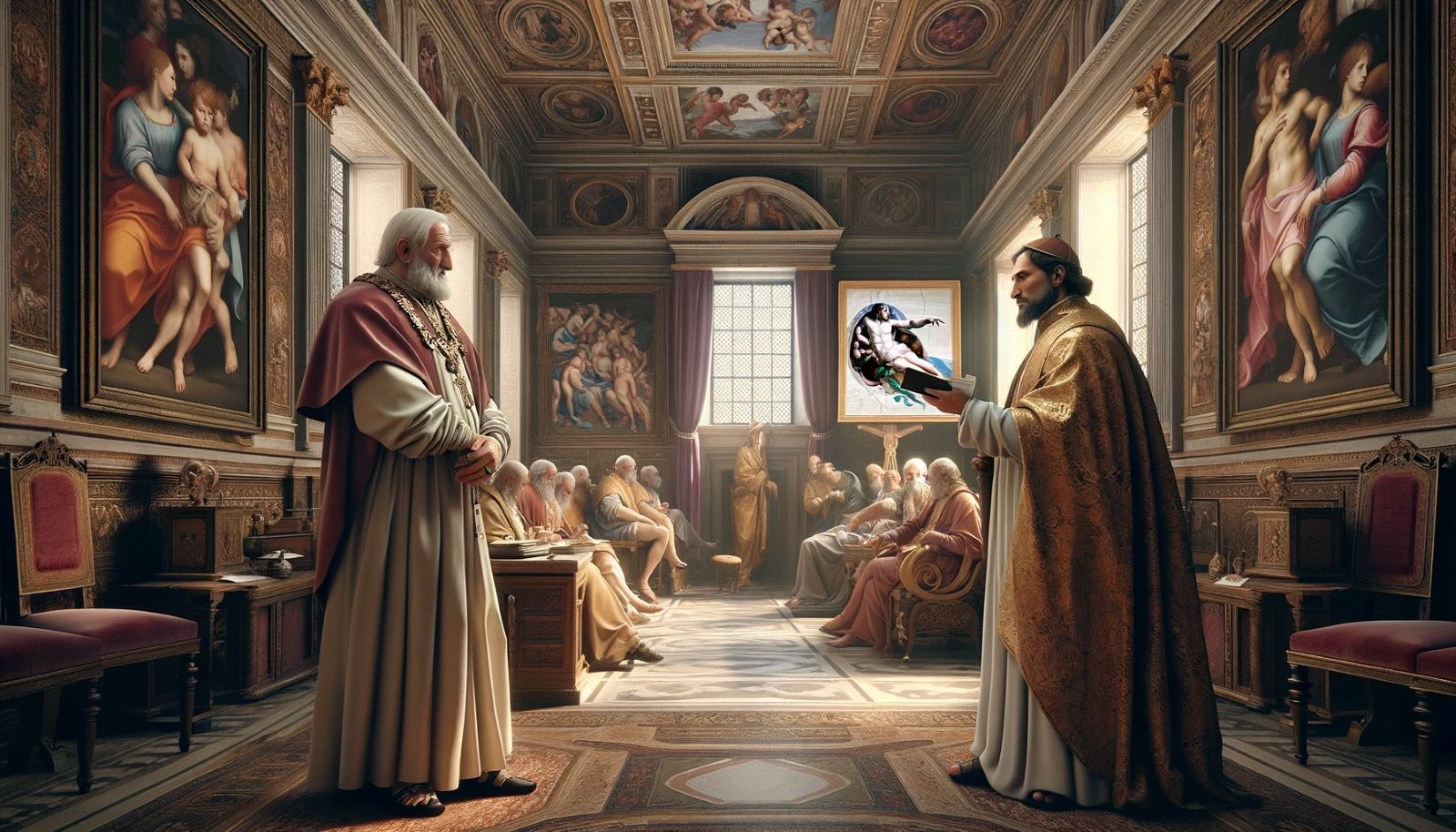

Arts and Culture
Who Commissioned Michelangelo To Paint The Ceiling Of The Sistine Chapel?
Published: March 4, 2024
Ericka Andersen, an editor at Christian.net, expertly merges digital strategy with content creation, focusing on faith and societal issues. Her communication skills enhance the platform's engaging narratives, fostering meaningful dialogue on belief's impact on society.
Discover the patron behind Michelangelo's iconic Sistine Chapel ceiling masterpiece. Uncover the fascinating history of arts and culture.
(Many of the links in this article redirect to a specific reviewed product. Your purchase of these products through affiliate links helps to generate commission for Christian.net, at no extra cost. Learn more)
Table of Contents
The Patron of the Sistine Chapel Ceiling
The patron of the Sistine Chapel ceiling was Pope Julius II, who commissioned the renowned artist Michelangelo to undertake the ambitious project. Pope Julius II, who was a great patron of the arts, envisioned the Sistine Chapel as a testament to the grandeur and magnificence of the Catholic Church. He recognized the potential of art to inspire and elevate the faithful, and he sought to transform the Sistine Chapel into a breathtaking masterpiece that would leave a lasting impression on all who beheld it. With this vision in mind, Pope Julius II entrusted Michelangelo with the task of adorning the ceiling of the Sistine Chapel with frescoes that would capture the essence of divine beauty and spirituality.
The commissioning of Michelangelo for the Sistine Chapel ceiling was a pivotal moment in the history of art and religion. It marked the convergence of two extraordinary talents – the artistic genius of Michelangelo and the visionary patronage of Pope Julius II. This collaboration would ultimately give rise to one of the most iconic and revered works of art in the world, solidifying the Sistine Chapel ceiling as a testament to the enduring power of creativity and faith.
Michelangelo's Commission for the Sistine Chapel
-
Michelangelo's commission for the Sistine Chapel was a monumental undertaking that would come to define his legacy as one of the greatest artists of the Italian Renaissance. In 1508, Pope Julius II summoned Michelangelo to Rome and tasked him with the unprecedented challenge of adorning the ceiling of the Sistine Chapel with frescoes depicting scenes from the Book of Genesis and other biblical narratives. This commission represented a profound vote of confidence in Michelangelo's artistic prowess and a testament to the esteem in which he was held by the papal court.
-
The commission presented Michelangelo with a daunting set of artistic and logistical challenges. The vast expanse of the Sistine Chapel ceiling, measuring approximately 5,600 square feet, required Michelangelo to devise innovative techniques to execute his vision. Working on his back atop scaffolding, Michelangelo employed a complex system of fresco painting to bring his compositions to life, utilizing a meticulous process of layering pigments onto wet plaster to achieve enduring and vibrant colors.
-
Michelangelo's commission for the Sistine Chapel demanded unwavering dedication and perseverance. Despite the physical and mental strain of the arduous endeavor, Michelangelo poured his heart and soul into the project, laboring tirelessly for four years to realize the breathtaking frescoes that adorn the ceiling. His commitment to excellence and his unwavering devotion to his craft are evident in every brushstroke, as he imbued the scenes with a transcendent beauty and emotional depth that continue to captivate and inspire viewers to this day.
-
The commission for the Sistine Chapel represented a defining moment in Michelangelo's career, propelling him to the pinnacle of artistic achievement and cementing his reputation as a master of unparalleled skill and vision. The completion of the Sistine Chapel ceiling stands as a testament to Michelangelo's indomitable spirit, creative genius, and unwavering faith, serving as a timeless testament to the enduring power of art and the human spirit.
The Role of Pope Julius II in the Sistine Chapel Project
-
Pope Julius II played a pivotal role in the Sistine Chapel project, serving as the visionary patron who conceived and oversaw the ambitious endeavor. His unwavering commitment to the arts and his profound appreciation for the transformative power of religious imagery propelled him to commission Michelangelo for the monumental task of adorning the Sistine Chapel ceiling with frescoes of unparalleled grandeur and spiritual significance.
-
Pope Julius II's patronage of the Sistine Chapel project reflected his fervent desire to elevate the spiritual and aesthetic experience of the faithful. By enlisting the talents of Michelangelo, he sought to create a transcendent space that would inspire reverence and awe, serving as a testament to the divine majesty and the enduring legacy of the Catholic Church.
-
The pope's personal involvement in the project was marked by a deep sense of determination and conviction. Despite the formidable challenges and complexities inherent in the undertaking, Pope Julius II remained steadfast in his support of Michelangelo, providing the artist with the resources, encouragement, and creative freedom necessary to bring his visionary compositions to fruition.
-
Pope Julius II's role extended beyond mere patronage; he actively engaged with Michelangelo, offering guidance and insight as the project unfolded. His unwavering commitment to the realization of the Sistine Chapel ceiling underscored his dedication to fostering a harmonious union of art and faith, transcending the boundaries of conventional artistic expression to create a timeless testament to the divine.
-
The enduring legacy of the Sistine Chapel ceiling stands as a testament to Pope Julius II's profound impact on the intersection of art and religion. His visionary patronage and unwavering support of Michelangelo's artistic vision culminated in the creation of a masterpiece that continues to inspire and uplift countless individuals, transcending the confines of time and space to convey the eternal truths of faith and creativity.
The Funding and Resources for the Sistine Chapel Ceiling
-
Papal Patronage: The funding for the Sistine Chapel ceiling project was primarily sourced from the papal coffers, under the patronage of Pope Julius II. As a passionate advocate for the arts and a staunch supporter of Michelangelo's creative endeavors, the pope allocated substantial financial resources to ensure the successful execution of the monumental undertaking. This patronage not only facilitated the acquisition of high-quality materials and pigments but also enabled the provision of essential logistical support, including the construction of scaffolding and the procurement of specialized tools and equipment.
-
Artistic Collaboration: In addition to financial backing, Michelangelo benefited from the collaboration of skilled artisans and craftsmen who contributed their expertise to the realization of his artistic vision. The collaborative effort involved the coordination of diverse talents, including plasterers, painters, and laborers, who worked in tandem to provide the necessary infrastructure and technical assistance essential for the meticulous execution of the frescoes. This collaborative synergy exemplified the collective investment of resources and expertise in bringing the Sistine Chapel ceiling to fruition.
-
Material Procurement: The procurement of high-quality materials was integral to the successful completion of the Sistine Chapel ceiling. Michelangelo spared no expense in sourcing the finest pigments and fresco supplies, ensuring the longevity and vibrancy of the painted compositions. The acquisition of premium materials, such as rare pigments and durable plaster, underscored the commitment to excellence and the uncompromising dedication to achieving artistic perfection.
-
Logistical Support: The logistical demands of the Sistine Chapel project necessitated the allocation of substantial resources to support the arduous process of fresco painting. From the construction of elaborate scaffolding structures to the provision of adequate lighting and ventilation within the chapel, meticulous attention was devoted to addressing the practical requirements essential for the realization of Michelangelo's artistic vision. The allocation of resources for these logistical considerations was essential in facilitating the seamless execution of the monumental artistic endeavor.
-
Spiritual Investment: Beyond material and financial resources, the funding for the Sistine Chapel ceiling encompassed a profound spiritual investment in the creation of a sacred space that would inspire and uplift the faithful. The allocation of resources extended beyond the material realm, reflecting a deep-seated commitment to imbuing the Sistine Chapel with an ethereal beauty and spiritual resonance that transcended the constraints of earthly wealth. This spiritual investment underscored the intrinsic value of the Sistine Chapel ceiling as a testament to the enduring power of faith and artistic expression.
In summary, the funding and resources allocated for the Sistine Chapel ceiling encompassed a multifaceted investment in artistic, material, logistical, and spiritual dimensions, reflecting a comprehensive commitment to realizing a masterpiece of unparalleled grandeur and significance.
The Impact of the Sistine Chapel Ceiling on Michelangelo's Career
-
Artistic Legacy: The completion of the Sistine Chapel ceiling marked a watershed moment in Michelangelo's career, propelling him to the zenith of artistic achievement and solidifying his reputation as a master of unparalleled skill and vision. The monumental frescoes showcased Michelangelo's extraordinary talent and innovative techniques, earning him widespread acclaim as a preeminent figure in the realm of Renaissance art.
-
Elevated Status: The Sistine Chapel ceiling project elevated Michelangelo to unprecedented heights of renown and prestige within the artistic community. His awe-inspiring depictions of biblical narratives and divine figures garnered admiration from patrons, scholars, and fellow artists, establishing him as a paragon of artistic excellence and a luminary of creative genius.
-
Enduring Influence: The enduring impact of the Sistine Chapel ceiling resonated throughout Michelangelo's subsequent artistic endeavors, shaping the trajectory of his career and influencing his artistic sensibilities. The experience of undertaking such a monumental and spiritually significant project left an indelible imprint on Michelangelo's artistic vision, infusing his subsequent works with a profound sense of spiritual gravitas and emotional depth.
-
Professional Recognition: The successful completion of the Sistine Chapel ceiling cemented Michelangelo's standing as a preeminent artist in the eyes of his contemporaries and future generations. His mastery of fresco painting and his ability to imbue his compositions with a transcendent beauty and emotional resonance garnered widespread admiration, earning him the enduring reverence of art connoisseurs and scholars.
-
Spiritual Fulfillment: The Sistine Chapel ceiling project represented a deeply personal and spiritually fulfilling endeavor for Michelangelo, allowing him to express his profound faith and reverence for divine beauty through the transformative power of art. The experience of creating a sacred space that inspired awe and reverence among the faithful left an indelible mark on Michelangelo's soul, shaping his artistic legacy and spiritual ethos.
In essence, the Sistine Chapel ceiling stands as a testament to the profound impact of Michelangelo's career, serving as a timeless testament to the enduring power of art and the human spirit.

